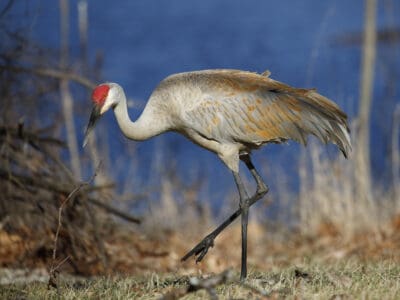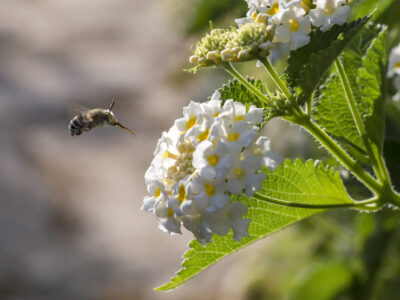Minnesota is “the land of a thousand lakes” and it’s also the land of a thousand species of animals. The state has a continental climate. This means it’s warm in the summer and famously cold in the winter, but this is just the thing for the wildlife that lives there. Minnesota’s wild creatures, the native and the exotic, the unremarkable and the strange, the rarest and the most common, also benefit from its ecological regions. These would be the prairies in the west and south, the Big Woods in the southeast, and the huge stretches of mixed forests in the north.
The Official Animal of Minnesota
The official state bird of Minnesota is the common loon, a waterfowl with a distinctive plumage, a lanceolate bill, and a strange and eerie call. The state butterfly is the monarch, a beautiful black and orange milkweed butterfly known for its spectacular migration. It has been proposed that the state reptile be the Blanding’s turtle. This peaceable, semi-aquatic turtle is very long-lived and doesn’t seem to age. Unfortunately, it’s also endangered.
Check out this article on the four official state animals of Minnesota.
Where To Find The Top Wild Animals in Minnesota
Areas, where the top wild animals in Minnesota can be seen, include the Chippewa National Forest and the 400,000 acre Boundary Waters Canoe Area which is found in the Superior National Forest. Since the state is found on, or more precisely under, the Mississippi flyway, sometimes all a person has to do is look up with a pair of binoculars to see great flocks of birds flying overhead in the spring and winter. To get really up close and personal with migratory birds-of-prey, a visit to Hawk Ridge near Duluth is a must. Other areas are Blue Mounds State Park, which is home to a herd of bison.
Here are but a few of the many animals to be found in Minnesota:
Mammals
Though many of Minnesota’s wildlife has been affected by habitat loss, it still has a good number of large mammals. These include moose, elk, and the ubiquitous white-tailed deer. Pronghorn antelopes are seen now and then in the state. Predators are the black bear, the gray and timber wolf, the coyote, and the bobcat. The Canada lynx, the cougar, and the swift fox sometimes pass through the state, while the gray and red fox live there year-round.
Some rodents found in Minnesota are the northern and southern flying squirrel, who don’t actually fly but glide using a membrane attached to their legs. Other rodents are chipmunks, ground squirrels, the western gray and American red squirrel, beavers, muskrats, woodchucks, and pocket gophers. Species of mice are plentiful, as are voles and the southern and northern bog lemming. Though they are not native to the state, the house mouse and the brown rat have become pests. The North American porcupine, the third largest of the rodents behind the beaver and the capybara, makes its home in the forests of Minnesota.
The state is home to rodent-like animals called shrews, including the American water shrew, the Arctic shrew, and the masked shrew. Lagomorphs are the eastern cottontail rabbit and the snowshoe hare, which swaps out its summer gray-brown coat for pure white in the winter. Moles burrow underground in Minnesota. One species is the star-nosed mole, a strange animal whose snout bears tiny, finger-like feelers called Eimer’s organs that help it find prey. The mole can also snap up prey faster than any living mammal and can smell even when it’s underwater.
Some bats in Minnesota are the little brown bat and the eastern pipistrelle. Other smaller mammals are skunks, raccoons, and opossums. Minnesota also has mustelids that are hard to find in more southerly states, including the American marten and the fisher.
Birds
It’s unsurprising that a state that has so many bodies of water has a wealth of waterfowl, even though it is landlocked. Minnesota is home to hundreds of species of swans, ducks, and geese, including the mallard duck, the northern pintail duck, the greater scaup, the tundra swan, and the trumpeter swan. The snow goose, the greater white-fronted goose, and the cackling goose find homes in Minnesota. The loon, which basically can’t walk on land and spends most of its time swimming or flying, is the state bird.
Shorebirds of Minnesota include the marbled godwit, the Eskimo curlew, dunlins, sanderlings, the pectoral sandpiper, and the ruff. Other birds that are seen around bodies of water are pelicans, bitterns, herons, egrets, night-herons, and the white-faced ibis. Even birds that are associated with the ocean have been glimpsed in Minnesota, including the black guillemotte and the ancient murrelet. Other seabirds such as gulls, terns, kittiwakes, and the parasitic jaeger are also seen in Minnesota.
Birds of prey found in Minnesota include the turkey vulture, the osprey, the golden and the bald eagle, harriers, falcons, merlins, kestrels, hawks, and owls.
Songbirds that either live in Minnesota year-round or come to the state to breed include tanagers, grosbeaks, the indigo bunting, and the dickcissel, a relative of the cardinal that lives on the prairie. Others are warblers, hummingbirds, woodpeckers, orioles, blackbirds, meadowlarks, chats, bobolinks, and sparrows. More Minnesota songbirds include flycatchers and thrushes, including the American robin, the eastern and mountain bluebird, and the veery.
The northern mockingbird, named for its ability to mimic the songs of other birds and even alarm clocks, is found in Minnesota, as are thrashers, wrens, and starlings. Starlings are not native to Minnesota but were introduced. Nuthatches are different from other birds in that they’re able to travel headfirst down trees. There are also swallows, chickadees, magpies, and blue jays. Though shrikes are not considered birds of prey because they lack talons, they are efficient predators and make up for their lack by impaling their victims on barbed wire.
Fish
A state with as many pristine lakes, streams, rivers, ponds, and marshes as Minnesota is bound to have an abundance of fish, both native and introduced. Besides different species of trout and salmon, Minnesota has a fish called the bloater. It’s a 10 inch long fish related to salmon. It lives in Lake Superior and gets its name because its gas bladder bloats up when it’s brought to the surface. Its conservation status is vulnerable. Other game fish include the pygmy whitefish and the rainbow smelt, which is considered invasive.
Fish that are allowed to be fished include types of catfish, bass, sunfish, the northern pike, and the muskellunge. The lake sturgeon, which has prehensile lips, can be taken, as can the burbot, the sauger, the walleye, the warmouth, and the white and yellow perch. The common carp and the goldfish, also invasive, are found in Minnesota, as are types of redhorse, mooneye, the northern hogsucker, and the bowfin, which is often mistaken for the rapacious and invasive snakehead. There are even more non-game fish, including shiners, darters, minnows, sculpins and stonerollers. Though the gravel chub is classified as least concern, it needs extremely clean water and a specific habitat and is given special attention by the Minnesota Department of Natural Resources. This is also true of the Topeka shiner. The ruffe, or the pope was introduced into the Great Lakes and has become invasive.
Other non-game fish include the silver and sea lamprey with their concentric rows of teeth to bite into the flesh of other fish and drain their fluids.
Reptiles and Amphibians
Minnesota has about 29 species of reptiles and most of them are snakes. These snakes include the eastern yellowbelly racer, rat snakes, ringneck snakes and two species of hognose snake. Hognose snakes are nonvenomous and play dead when they’re threatened. hTere are brown snakes and green snakes, redbelly snakes and garter snakes as well as bullsnakes. Two of Minnesota’s snakes are venomous. They are the timber rattlesnake and the massasauga. For a complete analysis of snakes in Minnesota, give our guide ‘17 Snakes Found in Minnesota‘ a read.
Turtles include the common snapping turtle, the false map turtle, the Ouachita map turtle and the endangered Blanding’s turtle. Lizards are the prairie and five-lined skink and the six-lined racerunner.
Salamanders found in Minnesota include the blue-spotted and the spotted as well as the four-toed. Some frogs are Cope’s gray tree frog, the spring peeper and Blanchard’s cricket frog. The three toad species are the American toad, the Great Plains toad and the Canadian toad.
Insects and Other Arthropods
Despite the fact that it gets so cold in the winter, there are close to 1000 species of insect and other arthropods in Minnesota. They include the American cockroach, the bumblebee and other types of ants, bees, wasps and hornets, including the giant ichneumon wasp. There are moths and butterflies such as the beautiful Io moth with its prominent eyespots, the monarch butterfly and the mourning cloak butterfly whose wing margins look like they were dipped in gold paint. There are also dragonflies, different types of beetles, mites, ticks and diplurans, strange, tiny, colorless arthropods that live in humus. There are also millipedes, centipedes and spiders.
Zoos in Minnesota
Along with its wilderness areas and wildlife refuges, Minnesota also has several top-notch zoos. They include the Minnesota Zoo in Apple Valley, Como Park in Saint Paul, Lake Superior Zoo in Duluth, Hemker Park and Zoo in Freeport and Oxbow Park & Zollman Zoo in Olmstead County.
Wild Animals in Minnesota
Wild animals not mentioned above in Minnesota include the white-tailed jackrabbit. This animal isn’t a rabbit but a hare. Differences are that hares tend to have bigger ears than rabbits and they don’t live in burrows. More importantly, their babies, called leverets, are precocial. This means they’re ready to take care of themselves soon after birth. Rabbit babies, called kittens, are helpless for a while.
The American badger also makes its home in the Minnesota prairie lands. This animal, which is a type of weasel, has a heavy body that’s low to the ground and powerful claws that help it dig. There are four subspecies of American badger. When it gets really cold in Minnesota, they might spend their time in their burrows in a state of torpor until the weather warms up. Badgers are predators, and sometimes, they hunt with coyotes. Male badgers are called boars and females are called sows.
As its name suggests, the sweat bee is an insect that likes to ingest human sweat for the salt even as they visit flowers for nectar. These bees often have a metallic green or blue thorax or head and sometimes have stripes on their abdomen. They’re social bees, but there’s no strict division of labor as can be seen in the honeybee.
The Most Dangerous Animals In Minnesota Today
Minnesota doesn’t have a lot of truly dangerous animals, but there are some to be wary of. They are:
- American bison. Though there’s a regulated herd in Blue Mounds State Park, visitors are still warned to watch these temperamental beasts at a distance. They can charge for no reason and are especially short-tempered during the summer rut.
- Black bear. It’s also a good idea to give this bear a wide berth. Though they’re not extremely aggressive, attacks on humans have occurred.
- Moose. This deer deserves respect simply because it is gigantic and powerful. Indeed, moose come after humans more than wolves or bears, though usually nothing comes of the encounter. Be especially careful around cows and their calves, for the mother will attack if she believes her baby is in danger.
- Rattlesnakes. Fortunately, these pit vipers give warning by shaking the keratin rattles at the ends of their tails. Don’t handle them.
Endangered Animals In Minnesota
Like everywhere else on earth, Minnesota has its share of animals that have become endangered through human activity, whether habitat destruction, pollution, climate change or overhunting. Here are some of them:
- Crystal darter. This little fish is considered the rarest of the darters that swim in Minnesota waters.
- Sprague’s pipit. This bird, whose status is vulnerable overall, is notable because it sings while it flies high in the sky.
- Northern myotis. This little bat is considered near threatened due to a disease called white-nose syndrome. This is a type of fungus that has killed millions of bats since 2018.
- Massasauga. Though this isn’t the rarest of rattlesnakes, it is still considered endangered in Minnesota.
Native Plants in Minnesota
Minnesota has hundreds of native plants which bring beauty and diversity to its landscapes. Bold, colorful flowers can be found across native species such as blazing stars, asters, maiden pinks, hyssops and more.
More Read
Read about:
- extinct animals that lived in Minnesota.
- stunning waterfalls in Minnesota.
- the highest point in Minnesota.
- the best national parks in Minnesota.
- the 5 biggest fish in Minnesota
- the best dog parks in Minneapolis, Minnesota.
- the longest biking trail in Minnesota.
- best camping near Minneapolis.
- best camping in Minnesota.
Minnesotan Animals

Admiral Butterfly
Stunningly beautiful wings
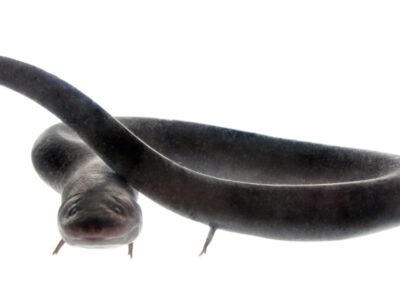
American Eel
Don't eat raw eel! Their blood is poisonous to humans when consumed raw.

Armyworm
They are so named because they "march" in armies of worms from one crop to another in search of food
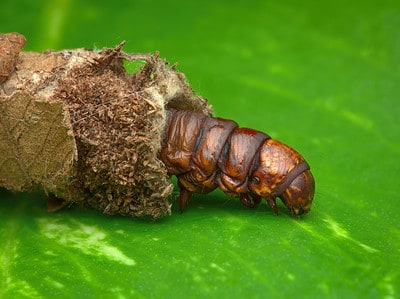
Bagworm Moth Caterpillar
They continually enlarge their protective cases

Beewolf wasp
They hunt bees
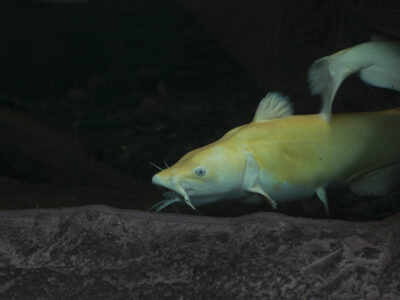
Blue Catfish
It's a strong fighter when caught on a fishing line
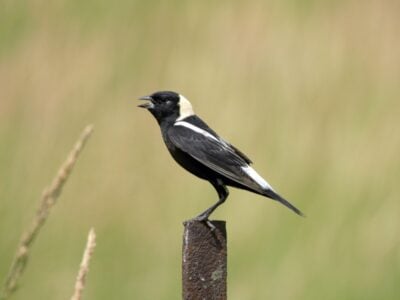
Bobolink
In spring, the male bobolink is the only North American bird who is dark below and light colored above. This makes identification easy.
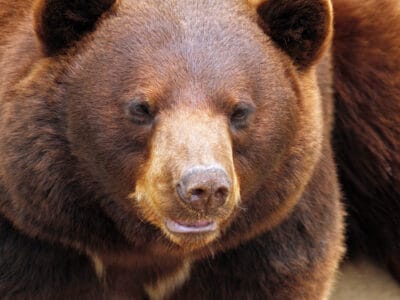
Cinnamon Bear
A newborn cinnamon bear weighs 1/2 pound -- about the same as a large apple.

Common Yellowthroat
The Common Yellowthroat stays close to the ground and uses stealth to survive!

Eastern Hognose Snake
Eastern hognose snakes are venomous, but only to frogs and toads.

Flea
Adult fleas can jump up to 7 inches in the air
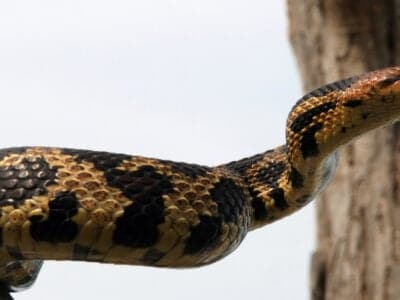
Fox Snakes
In some areas, fox snakes and gopher snakes have crossbred in the wild.
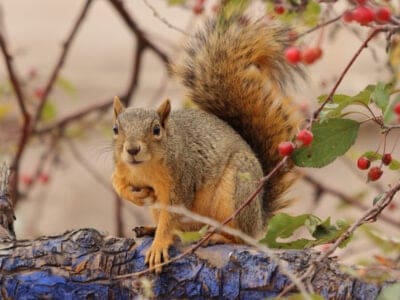
Fox Squirrel
Although it is a tree squirrel, it spends most of its time on the ground.

Groundhog (Woodchuck)
They whistle to each other to warn of approaching danger!
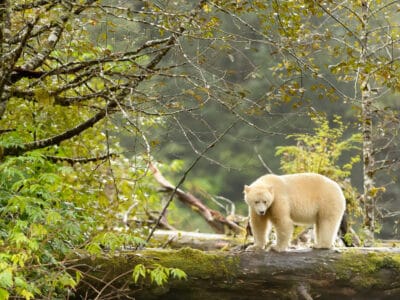
Kermode Bear (Spirit Bear)
The cubs are usually weaned after 6 to 8 months; however, they will remain with their mothers through their second winter until they reach 17 months old.

Mealybug
They have a symbiotic relationship with ants.

Mockingbird
Mockingbirds are incredible mimics that can learn hundreds of songs!
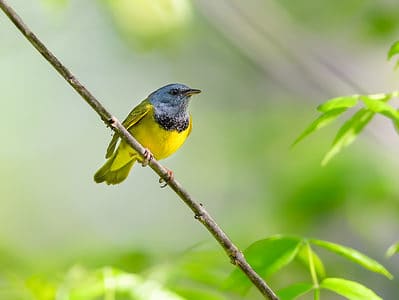
Mourning Warbler
The Mourning Warbler was named for its gray head, which resembles a mourning veil!

Nematode
Nematodes range in size from 1/10 of an inch to 28 feet long

Orb Weaver
Females are about four times the size of males

Owl
The owl can rotate its head some 270 degrees
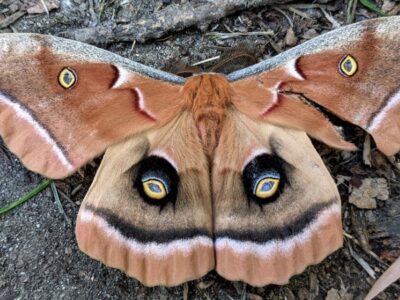
Polyphemus Moth
The Polyphemus moth doesn’t and can't eat, except when it's a caterpillar!
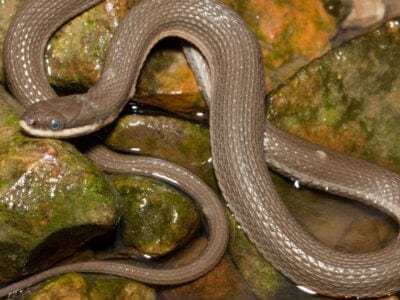
Queen Snake
Queen snakes have armor-like scales on the top of their head

Rat Snakes
Rat snakes are constrictors from the Colubridae family of snakes.

Red-Bellied Woodpecker
Red-Bellied Woodpeckers will often steal the nests of other birds.
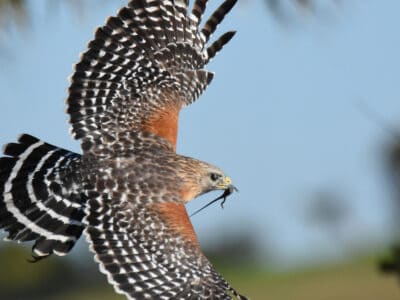
Red-Shouldered Hawk
Red-Shouldered Hawks reuse the same nesting area each year.

Rooster
Will mate with the entire flock!
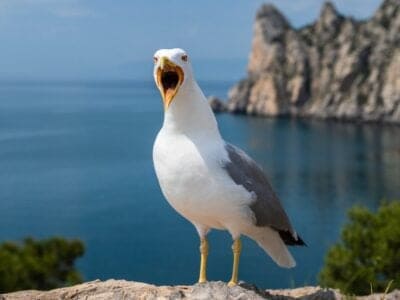
Seagull
Some gulls are capable of using tools

Smallmouth Bass
A fierce fighter!

Smokybrown Cockroach
Has up to 45 eggs per egg case

Southern Black Racer
These snakes live underground, beneath piles of leaf litter or in thickets, and they are expert swimmers.

Tiger Trout
As tiger trout are sterile, they cannot produce offspring. However, they do have relatively long lifespans and can live up to 10 years in captivity.

Tree Cricket
They make music with their wings
Minnesotan Animals List
- Admiral Butterfly
- American Eel
- Armyworm
- Bagworm Moth Caterpillar
- Beewolf wasp
- Blue Catfish
- Bobolink
- Cinnamon Bear
- Common Yellowthroat
- Eastern Hognose Snake
- Flea
- Fox Snakes
- Fox Squirrel
- Groundhog (Woodchuck)
- Kermode Bear (Spirit Bear)
- Mealybug
- Milk Snake
- Mockingbird
- Mourning Warbler
- Nematode
- Orb Weaver
- Owl
- Polyphemus Moth
- Queen Snake
- Rat Snakes
- Red-Bellied Woodpecker
- Red-Shouldered Hawk
- Rooster
- Sandhill Crane
- Seagull
- Smallmouth Bass
- Smokybrown Cockroach
- Southeastern Blueberry Bee
- Southern Black Racer
- Swallowtail Butterfly
- Tiger Trout
- Tree Cricket
- Yellowish Cuckoo Bumblebee (formerly Fernald’s Cuckoo Bumblebee)
Animals in Minnesota FAQs (Frequently Asked Questions)
What are some famous waterfalls in Minnesota?
Minnesota is home to some of the most incredible waterfalls in the United States. These include Hidden Falls, Minneopa Falls, and the only major waterfall on the Mississippi River, St. Anthony Falls.
What animal is Minnesota known for?
Minnesota is probably known for its moose, which is the largest extant deer.
What is the most dangerous animal in Minnesota?
The most dangerous animal in Minnesota is probably the bison. Bisons are irascible and can charge for what seems like no reason.
What is the fastest mammal in Minnesota?
The fastest mammal in Minnesota is the pronghorn antelope, which can reach 55 miles per hour. Only the African cheetah is faster.
How many species are in Minnesota?
Minnesota has 80 species of mammals, at least 996 species of insects and arthropods, 123 species of fish, 29 species of reptiles, 22 species of amphibians and 446 species of birds.




